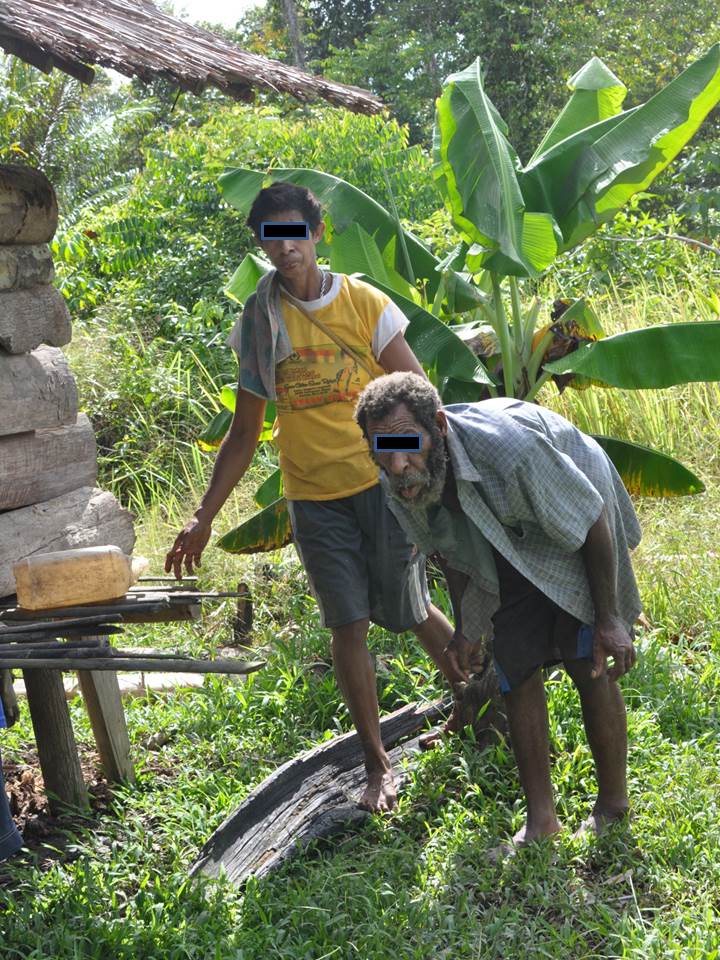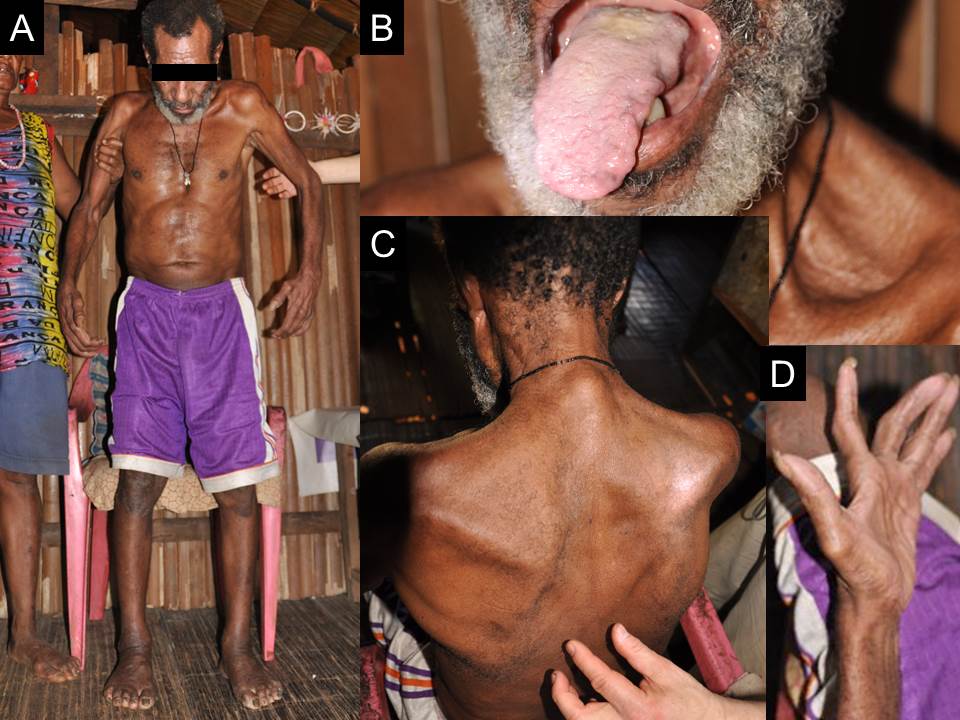- Project Leader : Okumiya Kiyohito (Kyoto University, Center for Southeast Asian Studies)
- Collaborators : Kuzuhara Shigeki (Suzuka University of Medical Science, Faculty of Health Science)
- : Kokubo Yasumasa (Mie University, Graduate School of Regional Innovation Studies)
- : Eva Garcia del Saz (Kochi University, Center for International Collaboration)
- : Matsubayashi Kozo (Kyoto University, Center for Southeast Asian Studies)
- : Fujisawa Michiko (Kyoto University, Center for Southeast Asian Studies)
- : Hirata Yutaka (Kita Akita Municipal Hospital, Department of Neurology and Internal Medicine)
Outline of Research
Only one previous follow-up study of amyotrophic lateral sclerosis (ALS) and parkinsonism in Papua, Indonesia has been carried out since a survey undertaken in 1962–1981 by Gajdusek and colleagues. Therefore, to clarify the clinical epidemiology of ALS and parkinsonism in the southern coastal region of Papua, the clinical characteristics and prevalence of the diseases in this region have been examined and assessed.
Cases of ALS and parkinsonism have been clinically examined by a 2001–2015 survey in Bade and other villages along the Ia, Edera, Dumut and Obaa rivers in Papua, Indonesia. While the prevalence of ALS in Papua has decreased over the past~30–35 years, it remains higher than the global average. There is a high prevalence of overlapping ALS and parkinsonism, which has also been previously reported in Guam and Kii.
Description
We are carrying out a survey for neurodegenerative diseases from 2001 and clarifying the high prevalence of ALS and parkinsonism in Papua.
The purpose is to clarify the association of clinical epidemiology with aging, ecological and environmental changes in Papua.
It is significant that there are still many cases showing pure ALS and an overlap of ALS, parkinsonism and cognitive impairment in Papua, different from the recent situation in Guam and Kii. The changing patterns of decrease of ALS and increase of parkinsonism in Papua might be caused by change of environmental and socioeconomic factors and aging as well in Guam and Kii. It is expected that etiology or risk factors of the neurodegenerative diseases will be disclosed in association with environmental factors.
We visited Guam and discussed with neurologists sharing the information in 2013. We submitted a report of the survey results in 2001–2012 to an international journal in 2014. We also held the international symposium in Kyoto and Kochi in Japan in 2014 inviting collaborators of Cenderawasih University. Further we will submit the papers and hold workshops and symposiums with the collaborators in Papua and Japan.


